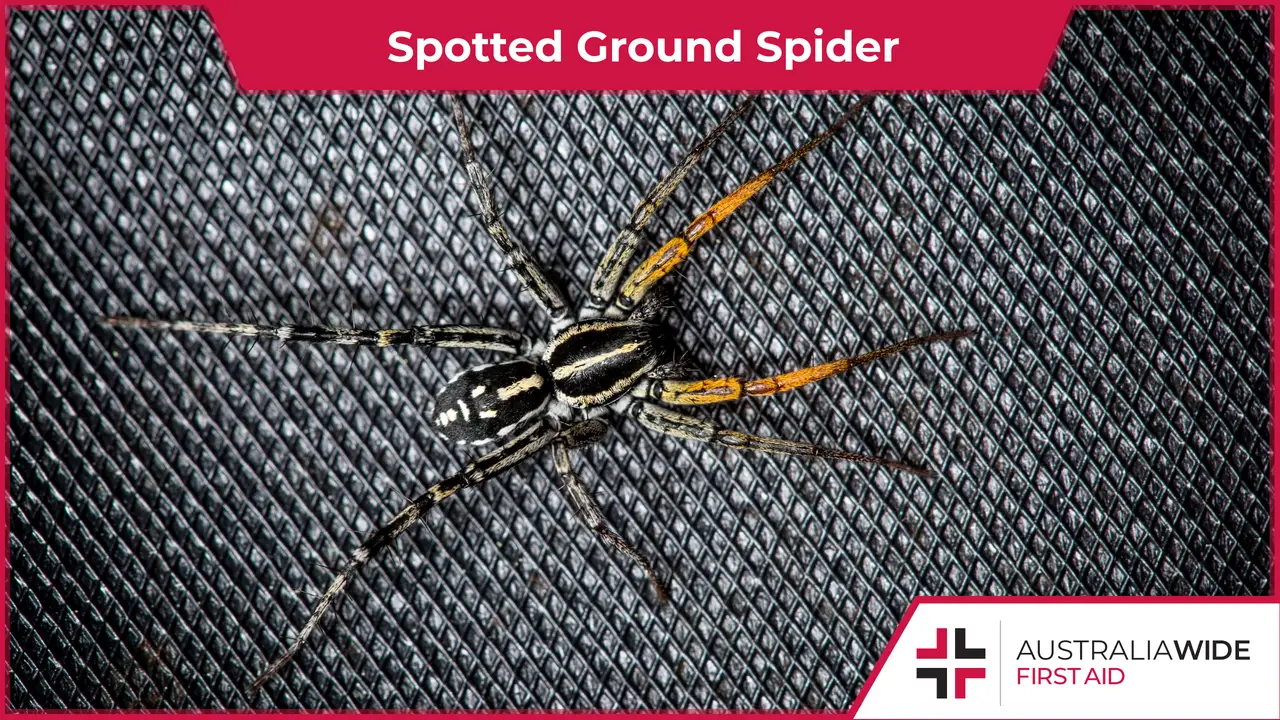Is the Spotted Ground Spider Poisonous?


The Spotted ground spider (Nyssus coloripes) is a vagrant species that is widely distributed across Australia.
With their sometimes orange front legs and club shaped palps (appendages that sit near the mouth), these spiders have been known to enter houses at night and may give you a fright.
In this article, we cover everything you need to know about the Spotted ground spider and answer the question - is their scary appearance indicative of an even scarier bite?
We also cover spider bites in our general and childcare first aid courses. We have training locations in every state, capital city, and major town throughout Australia. Head to our website to find a first aid course near you today.
The Spotted ground spider can vary dramatically in appearance, which is why they are known by a host of different names, including the Orange legged swift spider and the Spotted ground swift spider.
Their main identifying characteristics include:
We run certified First Aid courses throughout all major Australia citys. Find a location near you.
Male spotted ground spiders are always on the move hunting or searching for females. They can be found:
Females, on the other hand, are typically found in or near their burrows, which can be built in the ground and have twigs or leaves arranged around the entrance like a palisade.
The Spotted ground spider is a hunting spider that ambushes ground dwelling insects.
Females create oval egg sacs that can house roughly 50 eggs.
Spotted ground spiders are not considered dangerous to humans, as they are timid in the face of conflict and reluctant to bite.
Likewise, their bites generally only cause mild symptoms like a red welt and localised hot feeling.
To treat:
To learn more about treating spider bites, head to one of our general or childcare first aid courses.
We have training locations in every state, capital city, and major town throughout Australia.
Head to our website to find a first aid course near you today.

March 11, 2025
Darwin, the tropical capital of Australia’s Northern Territory, is home to a rich diversity of wildlife - including an impressive array of spiders. From the sprawling webs of golden orb-weavers to the cryptic camouflage of trapdoor spiders, these arachnids play a vital role in the local ecosystem. While some may inspire fear, the majority are harmless and even beneficial, helping to control insect populations.

September 4, 2024
Cat bites, while often underestimated, can lead to serious health complications if not treated promptly and properly. Cats' mouths harbour a variety of bacteria that can cause infections in humans.

April 1, 2024
Encounters with wildlife can often be thrilling, but when it comes to the creature known as the drop bear, the experience can quickly turn dangerous. A sharp increase in recent attacks prompts the need for understanding proper first aid procedures in case of an attack.